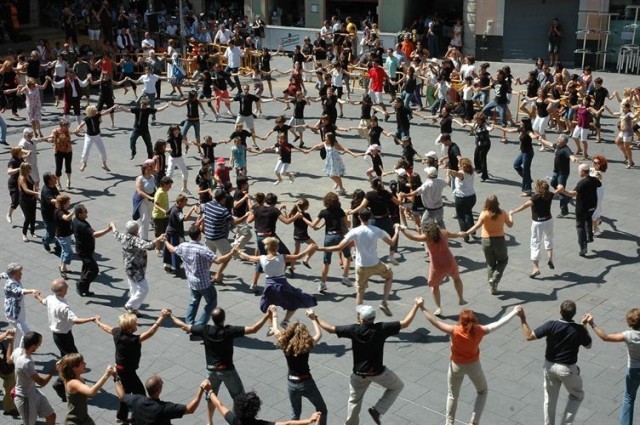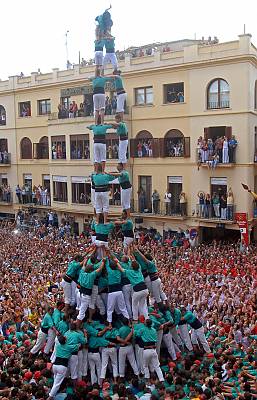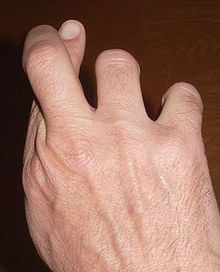It’s not just the language that makes
things foreign.
I remember when I was younger and going to
France by boat that it was the smell of Gauloise that told me I was not in the
UK, that distinctly un-Players-like smell that reeked of foreignness! That and the denim wearing surly workers with
the said ciggie hanging from the sides of their mouths!
It is, so often, the small things that make
you stop and think, or stare.
I was fascinated by schoolchildren in
France shaking hands with each other!
Bizarre - and what a coincidence that that word is of French
origin! The fact that the French mother
of the (French) exchange student that I was staying with used the breadknife to
scratch a cross on the baguette before she cut it for us to eat was also
odd. My French counterpart also had the
use of a Solex motorised bicycle when we poor British kids were nowhere near
the age where we would be allowed to own and ride such a thing! And he smoked! Altogether foreign!
I have now lived in Catalonia long enough
to regard other Spaniards as foreign, when I compare them with the Catalans
that I know.
Catalonia has, famously (and rightly)
banned bullfighting so the central bullring in Barcelona has been converted
into a shopping centre.
Flamenco is not, absolutely not, Catalan
and I have observed a positive shudder of revulsion from some of my Catalan
friends when Flamenco music is laid down behind advertising images of Spain on
the television: rushed frilly frocks, stamping feet, clicking castanets and
Arabic inspired ululations are not the stuff of Catalonia. Which does not mean that I understand my
adopted region/country’s cultural effusions any more than the gyrations of
snake hipped, tight trousered writhers!
The national dance of Catalonia is the
Sardana. This is a circular dance where
people (men, women, children - if they know the steps) join hands and execute a
series of sideways steps with hands raised to shoulder level. It is like very sedate Morris Dancing, but
without the funny clothes, sticks and bells.
And it seems to go on forever accompanied by music from a wind band of
raucous instruments that seem to hark back to the music making in churches
before the advent of the more melodious pipe organ. They are fascinating if mystifying;
democratic, and mildly hypnotic. The
Sardana is everything that Flamenco is not: calm, contained, regimented, and
urbane.
Then there are the Castells - the ‘castles’
of people (Castellers) who form structures by standing of the shoulders of a
gradually emerging tower of people. The
highest towers are 10 persons high - ten levels of people standing on each other’s
shoulders.
It sounds unlikely and
absurd, but viewing the construction of these towers is a strangely moving
experience.
Once the structure is firm and developing the castellers are
accompanied by a band that plays the Toc
de Castells on instruments called Grallas
(a variety of long, wooden oboe-like instruments) with rhythm provided by drums
called timbals.
There is keen competition between the
various Collas or groups and
competitions are sometimes televised - though watching is never as exciting or
involving as actually being there.
There is an element in my thinking that
echoes the sentiments of Pierre François Joseph Bosquet when viewing the Charge
of the Light Brigade in the Crimea, “C’est
magnifique, mais ce ne’est pas la guerre: c’est de la folie.” But, people don’t (usually) die building
these human castles and they have become an essential element in the Catalans
presentation of their culture to the world.
And it is a ‘folie’ that has
been exported to many other enthusiastic countries, including the UK. Well, ‘vive la difference!’ as we say in
Britain.
But, there are some things that make you
stop and think, and then shake your head in disbelief.
Look back to the picture at the top of this
blog. Not a remarkable photograph,
rather messily composed indeed. But look
at it carefully and then answer the following question: which of the condiment
containers contains the pepper? The one
on the left or the one on the right?
If you are British, you might ask whether
this is some sort of trick question, the answer being so obvious, but bear with
me and make your decision.
You said the one on the left, didn’t
you? Obviously you did because, just as
obviously, it is the pepper pot.
But it was not! The single-hole container was for pepper and
the ring of holes was for salt! And it
was not a mistake! This is what the
Catalans and the Spanish do!
I was as shocked as I was when I found out
in a first year university linguistics class that not everybody had used the
word, “cree” when crossing fingers when playing a childhood game to claim
immunity. I discovered that ‘cree’ was
confined to South East Wales and parts of the West Country! While other outlandish terms such as
‘fainites’ or ‘barley’ or ‘scribs’ or the snobbish sounding ‘pax’ were used
with familial confidence by otherwise normal fellow students!
It was a salutary lesson, teaching us that
our (until then) assumption about something we had never questioned was not as
secure as we had thought.
And if something as basic as our word for a
childish truce was incomprehensible to the majority of our fellow students,
then what else might need to be rethought?
Well, that was the lesson that I drew from
the experience, and have thought about often since. And read the Opie’s book on the Lore and
Language of Schoolchildren, I thoroughly recommend it - though the studies that
they largely founded have developed somewhat nowadays!
Oh yes, and there is a suggestion about why
the difference in the salt and pepper might have developed.
The British, it is suggested, were more
likely to put a little pile of salt on the side of the plate and dip food into
it, therefore the single-hole would be perfect for forming the pile.
It is further suggested that pepper was an
expensive spice and not one that could be merely sprinkled with abandon,
remember that in the C15th it could take half a day’s work by a craftsman to
earn enough to buy just 100 g of pepper, so not something you would sprinkle
with reckless abandon - presumably we Brits had cheaper supplies!
It has also been suggested that the
restriction to a single-hole for salt might have something to do with health,
restricting the amount of salt to benefit a healthy diet? Whatever the reasons, it was shocking to find
that a time-honoured assumption was, yet again, called into question by ‘other
people’ doing things differently.
Presumably I didn’t learn the lesson
sufficiently the first time round and so I needed the reinforcement of
surprise.
So like us, and yet so different!







No comments:
Post a Comment